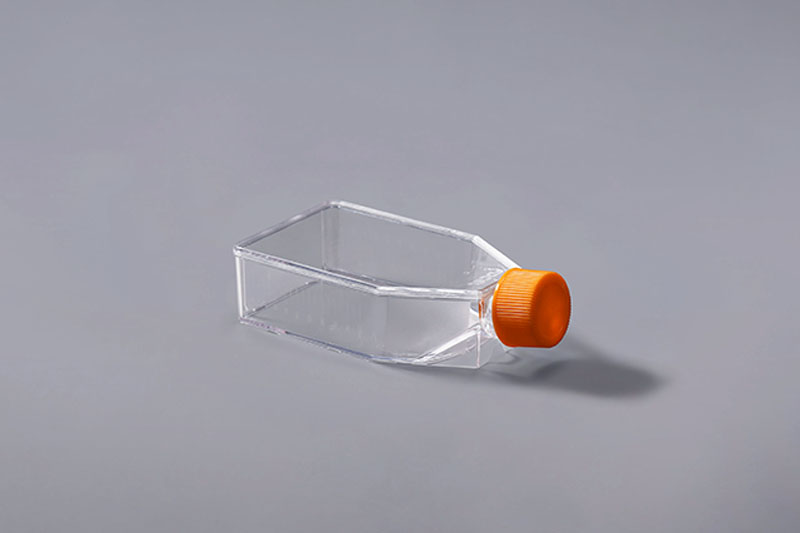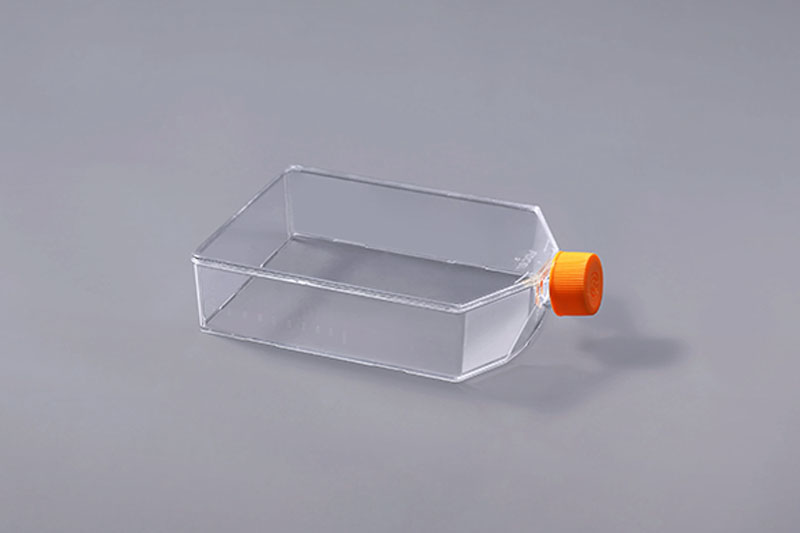Cell culture flasks are mostly used for culturing adherent cells, which adhere to the bottom of the flask and grow. When the cells grow to a certain extent, the cells need to be digested before subsequent operations. So how do we digest the cells in the cell culture flask?
Due to the growth characteristics of adherent cells, in order to maintain the cells in a good state, we need to use a special solution for cell digestion, that is, trypsin. When most cells are digested, they only need to be rinsed with trypsin once. After the trypsin is removed, the remaining traces of trypsin that cannot be calculated and adhered to the cell surface are generally less than 2 minutes at 37°C, which is sufficient to digest the cells (most of them). less than 1min). For these cells, in principle, do not use trypsin to incubate the cells. Continuous passage in this way will cause great harm to the cells. The simple procedure is PBS rinse and aspirate, trypsin rinse and aspirate, followed by digestion at 37°C. Cells that are more difficult to digest (the washing method cannot be digested for 5 minutes) generally need to be incubated with a small amount of trypsin.
FuDau T75 Cell Culture Flasks
It should be noted that it is not necessary for all cells to be digested in a single circle with very discrete distribution. Generally, we observe the adherent cell layer with the naked eye. As long as it can move, most of them move in a sandy manner. Cell digestion or pipetting to completely dissociate cells is not necessary. Generally, it can move, indicating that the adhesion of cells to the cell culture flask material has disappeared, the adhesion between cells has also disappeared, and the cells have been distributed independently. At this time, digestion should be stopped.
FuDau T225 Cell Culture Flasks
The effect of cell digestion directly affects subsequent cell culture experiments. When digesting cells, we must pay attention to aseptic operations to avoid introducing foreign contamination into cell culture flasks, which will affect subsequent cell growth.
The FAI climbed 5.9 percent year-on-year in the first 11 months of 2018, quickening from the 5.7-percent growth in Jan-Oct, the National Bureau of Statistics (NBS) said Friday in an online statement.
The key indicator of investment, dubbed a major growth driver, hit the bottom in August and has since started to rebound steadily.
In the face of emerging economic challenges home and abroad, China has stepped up efforts to stabilize investment, in particular rolling out measures to motivate private investors and channel funds into infrastructure.
Friday's data showed private investment, accounting for more than 60 percent of the total FAI, expanded by a brisk 8.7 percent.
NBS spokesperson Mao Shengyong said funds into weak economic links registered rapid increases as investment in environmental protection and agriculture jumped 42 percent and 12.5 percent respectively, much faster than the average.
In breakdown, investment in high-tech and equipment manufacturing remained vigorous with 16.1-percent and 11.6-percent increases respectively in the first 11 months. Infrastructure investment gained 3.7 percent, staying flat. Investment in property development rose 9.7 percent, also unchanged.
 English
English




















































